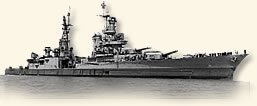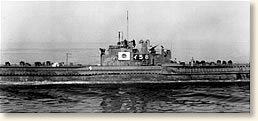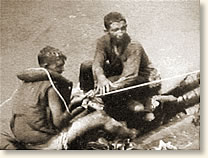Friday, September 30, 2011
Yichudim: The Many Meanings of Unity in Judaism, pt. 1

If you drop in the word yichud or yihud into your search engine, you will get a long list of links. Oddly, though, most of them take you to the issue of yihud in the sense of "seclusion," the norms governing when Jewish men and women can and cannot be together alone. In a related discussion, there is an element of a Jewish wedding called the yichud, during which the couple is allowed time alone and away from the guests. This actually fulfilled a Talmudic criteria for being married, that witnesses see the couple seclude themselves together for the purpose of marriage.
Ironically, what is much harder to find via search engine is the philosophical and mystical use of the term as it applies to God, which in certain circles is a far more critical issue for a Jew to know. It is even soterological - "salvation" depends on it (according to some). If one finds it used in its philosophic context, the site will discuss Maimonides (RaMBaM). This is wholly as it should be, because RaMBaM is really the first Jewish thinker to make understanding and affirming the unity of God a core issue of Jewish belief. That sounds strange, but it's true. Yes, Jews have recited the Deuteronomic declaration, the Sh'ma (Hear O Israel, Adonai is our God Adonai is one/alone/unique)[Deut. 6:4] since earliest times. But the Sages of the Talmud seem to make it's twice daily recitation mandatory because, well, the Scriptures says you should say it twice ("When you lie down and when you rise up"). They never say, for example, that the Sh'ma is "the essence of Judaism" or "the watchword of our faith," as becomes common in later centuries.
It's centrality is implicitly affirmed in an entirely other context, by Rabbi Akiba's decision to recite it at its designated time -- which happened to be the same time his skin was being raked off his back by a Roman executioner. Again, Akiba doesn't say - "Oh, this is the thing that must be affirmed at my death." Rather, he realizes that the time of day to recite the Sh'ma has arrived, and he's gonna do the Jewish thing, come hell or high water. Still, that commitment to say it at the moment of death gave affirming the unity of God a special significance. Akiba adds a coda, about finally understanding what the Sh'ma means in the following paragraph when it demands one must "Love Adonai your God with...all your being." (Elah Ezkara). Impending death both focuses the mind and makes what comes to mind seem very important indeed. Akiba's story certainly enhanced the significance of declaring God's oneness, but not on a philosophical level. Akiba's martyrdom highlights devotion to God, not any idea about God.
For centuries after Akiba, no one claimed that accepting/internalizing/grokking the oneness of the God of Israel was even a mitzvah until the RaMBaM said it was. In his list of commandments, this belief is the second mitzvah listed. In his Mishneh Torah, it is considered the first obligation and the foundation of the Torah.
Ironically, what is much harder to find via search engine is the philosophical and mystical use of the term as it applies to God, which in certain circles is a far more critical issue for a Jew to know. It is even soterological - "salvation" depends on it (according to some). If one finds it used in its philosophic context, the site will discuss Maimonides (RaMBaM). This is wholly as it should be, because RaMBaM is really the first Jewish thinker to make understanding and affirming the unity of God a core issue of Jewish belief. That sounds strange, but it's true. Yes, Jews have recited the Deuteronomic declaration, the Sh'ma (Hear O Israel, Adonai is our God Adonai is one/alone/unique)[Deut. 6:4] since earliest times. But the Sages of the Talmud seem to make it's twice daily recitation mandatory because, well, the Scriptures says you should say it twice ("When you lie down and when you rise up"). They never say, for example, that the Sh'ma is "the essence of Judaism" or "the watchword of our faith," as becomes common in later centuries.
It's centrality is implicitly affirmed in an entirely other context, by Rabbi Akiba's decision to recite it at its designated time -- which happened to be the same time his skin was being raked off his back by a Roman executioner. Again, Akiba doesn't say - "Oh, this is the thing that must be affirmed at my death." Rather, he realizes that the time of day to recite the Sh'ma has arrived, and he's gonna do the Jewish thing, come hell or high water. Still, that commitment to say it at the moment of death gave affirming the unity of God a special significance. Akiba adds a coda, about finally understanding what the Sh'ma means in the following paragraph when it demands one must "Love Adonai your God with...all your being." (Elah Ezkara). Impending death both focuses the mind and makes what comes to mind seem very important indeed. Akiba's story certainly enhanced the significance of declaring God's oneness, but not on a philosophical level. Akiba's martyrdom highlights devotion to God, not any idea about God.
For centuries after Akiba, no one claimed that accepting/internalizing/grokking the oneness of the God of Israel was even a mitzvah until the RaMBaM said it was. In his list of commandments, this belief is the second mitzvah listed. In his Mishneh Torah, it is considered the first obligation and the foundation of the Torah.
Now this is a notable claim, given that the Torah lists a very limited number of commandments that demand of us certain thoughts - to love God utterly is one, to not covet other peoples' stuff is another. And the fact is....belief in God, or God's nature is not one of them, at least explicitly. But the RaMBaM turns a declarative sentence, "I am Adonai your God...." into an imperative, "[You must believe] I am Adonai your God..." He makes a great philosophic argument for that, though it remains contrived in light of what the Hebrew Bible actually does and does not say. But Maimonides goes even further, arguing that simply affirming the idea as creed is not enough - one must grasp it and all its implications on a philosophic level of understanding, one that erases all intellectual doubt. If this all sounds rather Christian, I agree, though historically speaking, the RaMBaM is mostly under the influence of Islamic scholastics who, like Christians, really made reasoned thoughts and belief the sina qua non of valid religious experience. So, more than any rabbi before him, RaMBaM is insisting Jews have to hold certain beliefs (at least 13 of them).
http://www.jewishideasdaily.com/content/module/2011/10/5/main-feature/1/who-owns-maimonides/
So, what does this have to do with Jewish mystical beliefs and rituals of power? I'll get to that next entry. Its just a steep learning curve for understanding what's coming. Key themes: For Akiba, the unity of God is linked to love, for Maimonides, its all about intellect.






